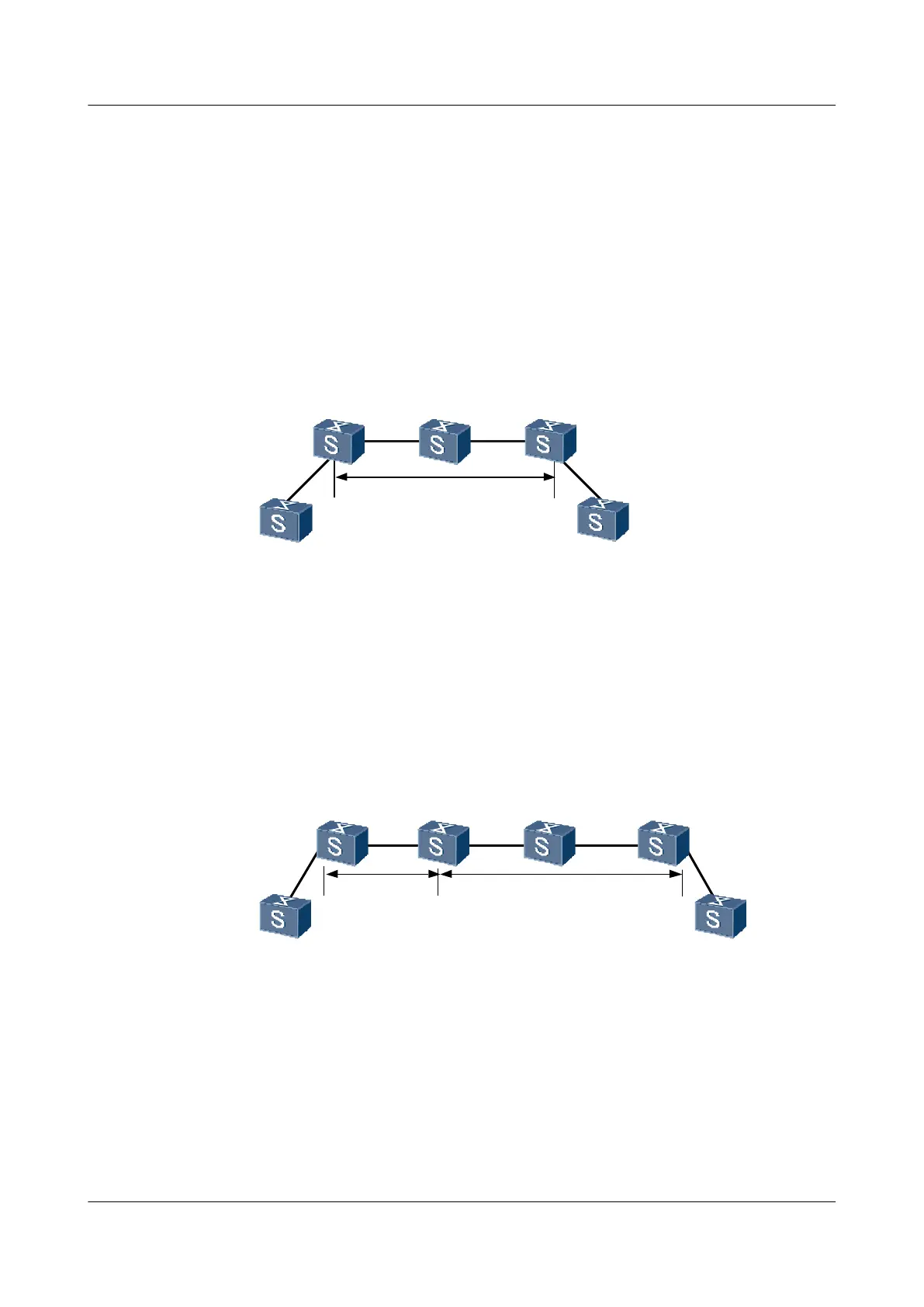When PE1 does not forward packets sent from PE2 for a certain reason, for example, PE2 is no
longer specified as the peer, PE1 sends a Withdraw message to PE2. After receiving the
Withdraw message, PE2 tears down the PW tunnel and returns a Release message to PE1. After
receiving the Release message, PE1 releases the label and tears down the PW tunnel.
SH-PW and MH-PW
l SH-PW
The SH-PW (single-hop PW) is a PW set up between two U-PEs. That is, switching labels
at PW label layer is not required, as shown in Figure 5-4.
Figure 5-4 Networking of SH-PWE3
l MH-PW
The MH-PW (multi-hop PW) is a set of two or more contiguous PW segments between
two U-PEs, as shown in Figure 5-5. The forwarding mechanism of U-PE in MH-PW is the
same as that in SH-PW except that the MH-PW requires exchange of PW labels on the
switching PE (S-PE).
Figure 5-5 Networking of MH-PWE3
CE1
CE2
U-PE1 U-PE2S-PE
PW200
P
PW100
To carry out MH-PWs, the S-PE needs to connect the SH-PWs at both the endpoints of the
PW and switch the labels at the PW level on the S-PE. PWs can be switched in the following
modes:
– Dynamic-and-dynamic switch: The PWs on the two sides of the S-PE are set up through
signaling. The remote labels are sent from the two neighboring endpoints (U-PE or S-
PE) to this S-PE using signaling.
– Static-and-static switch: The PWs on the two sides of the S-PE are configured manually.
5 PWE3 Configuration
Quidway S9300 Terabit Routing Switch
Configuration Guide - VPN
5-6 Huawei Proprietary and Confidential
Copyright © Huawei Technologies Co., Ltd.
Issue 03 (2009-08-20)

